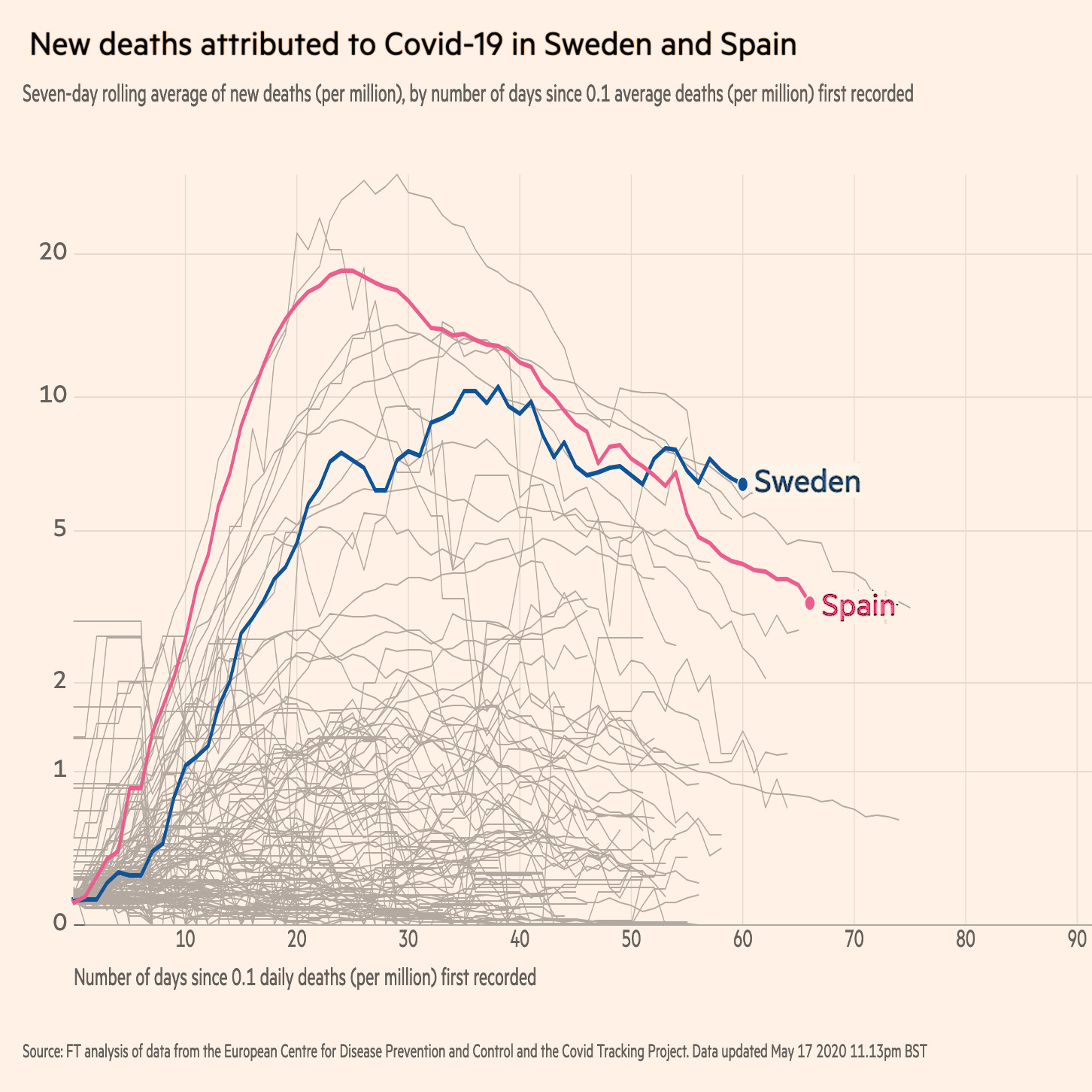By
Prof. med dr Marcello Ferrada de Noli. Swedish Public-Heath Epidemiology professor emeritus.
Former Research Fellow at Harvard Medical School.
What are, so far, the results of Sweden’s self-styled strategy of combating the COVID-19 pandemic?
About a month ago, Sweden’s ambassador to the United States, Karin Ulrika Olofsdotter, said that “About 30 percent of people in Stockholm have reached a level of immunity.” She also announced, according to NPR:
“We could reach herd immunity in the capital as early as next month.”
That estimation, now proven to be flawed, derived from the Swedish Public Health Agency (FHM), whose chief epidemiologist Anders Tegnell had previously made public in an interview at the Norwegian network NRK.
Now, after Sweden’s catastrophic mortality figures (see graphics below) in comparison with all other countries, government officials including and the FHM try to explain that “herd immunity is not the aim”. Which, in fact, no one of us from the critical bench to the FHM epidemiological approach has ever claim.
To contribute to the general confusion that covers what Sweden is really up to, the advisor to the FHM, Professor Johan Giesecke, recently presented the following redundant explanation:
– (Interviewer): “Is it correct to call it herd immunity, and is that the Swedish strategy”?
– Giesecke: “Is not a strategy but it is a byproduct of the strategy. The strategy is to protect the old and te frail”
But in epidemic management, aims is absolutely not the same concept than strategy. So, either has Giesecke a confusion of terms, or he wishes that we adopt it to deviate from the focus represented by the morally unjustified high Swedish death toll among “the old and the frail”.
Nevertheless, later in the interview, Professor Giesecke admits that what Sweden is doing is just that, “herd immunity”:
–As far of the rest of the population is concerned we just allow it to pass through the population, essentially?
– (Giesecke) Essentially, yes.
–Which is… I mean…
– (Giesecke) Herd immunity, yes.
–That’s of course commonly understood by what we call the herd immunity strategy, basically.
–(Giesecke) Yeah.
 Click on image above for the extended YouTube video (2 minutes & 40 sec) with Giesecke’s & Tegnell’s statements on Sweden’s herd immunity
Click on image above for the extended YouTube video (2 minutes & 40 sec) with Giesecke’s & Tegnell’s statements on Sweden’s herd immunity
The “herd immunity” approach in Sweden rather represents a strategy devised “to combat” the COVID-19 epidemic à la Suede, meaning the idiosyncratic self-image of “we are world’s best” that the governing elites have cultivated along the years of economic prosperity and social advances –in much by staying out of directly participating in World Wars of the previous century.
Paradoxically, this strategy comprises to oppose any form of internationally (WHO included) adopted measures to precisely combat the epidemic. It means doing the minimum active interventions to control the spread of the virus, not to mention to have contained it in time.
Why Sweden, of for that part any country, would pursue that approach? The most simple answer would be: to maximize the possibilities for the country’s economy to continue in activity. E.g., by not closing schools, parents wouldn’t need to say at home taking care of their kids; by no closing the restaurants, they would not interrupt the chain of productivity represented by that branch; etc. In the words of Sweden’s chief epidemiologist Anders Tegnell:
“If we close down the schools in Sweden we loose 20 to 25 percent of the work force”
The Swedish government –counting with the consensus of all parties– has invested more money in financial packages aimed to the corporate industries and other business, than to purchase equipment specifically devised to combat the epidemic in the health-care front.
Could Sweden afford not to choose the economy as the priority aim? Added it precarious position in a geopolitical, polarized landscape –viewed at least from the Swedish elite’s perspective– Sweden need to deliver economically, if it expects the powers will come to help, as many Swedes believe.
Not a better economy
A plausible indicator is to be found in the comparison of Sweden with its neighbour Nordic countries. Differently to the more laissez faire Swedish approach, Finland, Denmark and Norway have adopted the strategy of a more strict lockdown.
Finnish Helsingin Sannomat reports that unemployment in Sweden has “so far risen more” than in Finland. Whereas the GDP is “shrinking almost as much” in both countries.
Regarding a comparison with Denmark, a new published research paper shows that no significant difference there exists between the decrease in the level of customers’ consumption between Denmark (by the time it had a strict lockdown) and Sweden.
Previously, Financial Times headed “Sweden unlikely to feel economic benefit of no-lockdown approach”. And, most important, finance experts in Sweden began to acknowledge that the economic impact of the COVID-19 epidemic in Sweden will be much worse than the previously forecasted.
A much worse death toll in comparison with to its “lockdown” counterpart countries
As to the human costs in comparison with other countries, well…all depends on how much importance, or little importance, would epidemiologists attribute to the death toll. Sweden’s Tegnell, for example, however characterizing the Swedish death toll as “horrifying”, have also said that (the mortality indicator) is “perhaps not the most important part”.
So, how horrifying the Swedish death toll has so far resulted under the ‘epidemiological’ strategy of Anders Tegnell? The answer: most horrifying in the world. As it is shown in the following graphics:
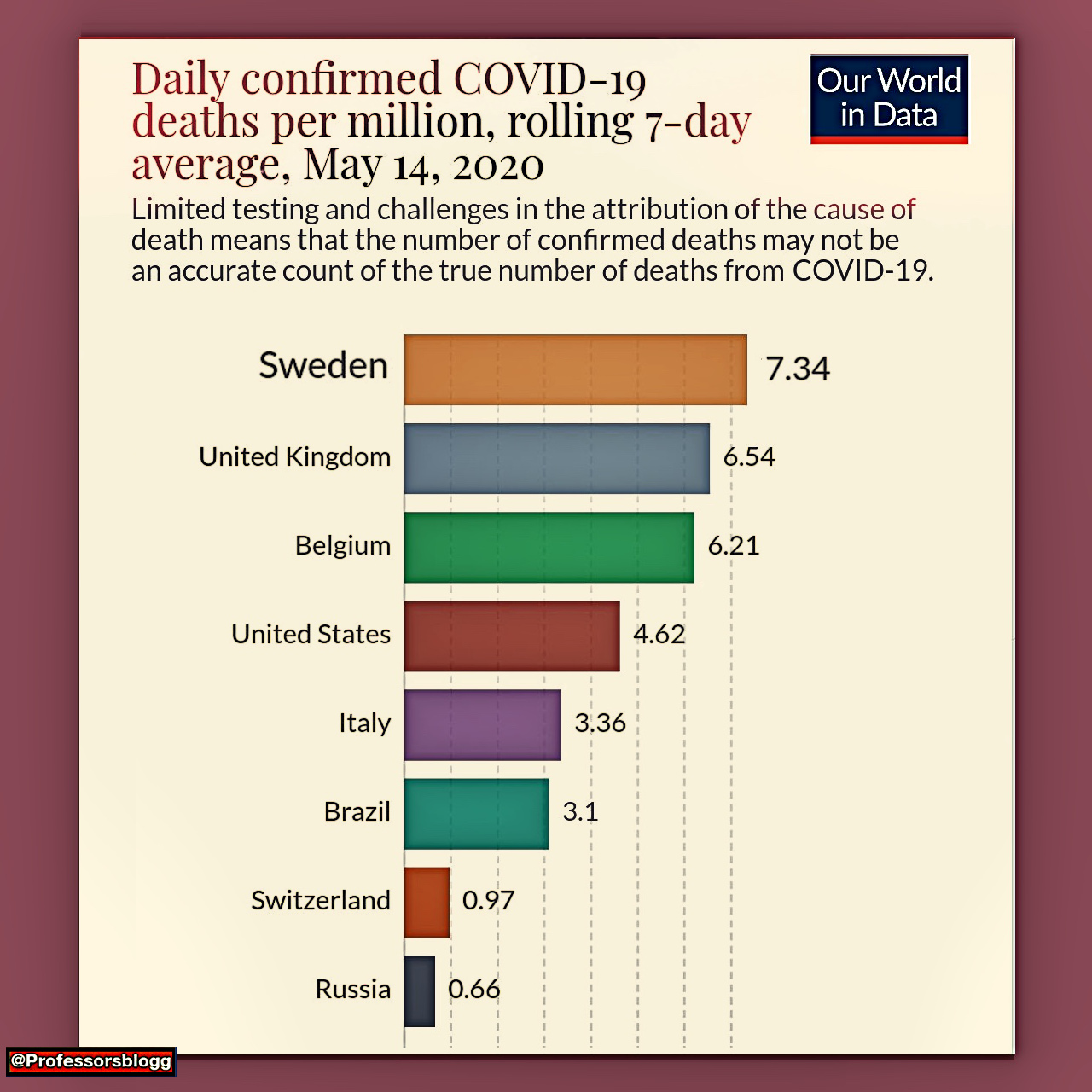
On 14 May, Sweden reached the top rate among the above computed countries regarding COVID-19 deaths per million.
Source of data: Our world in Data
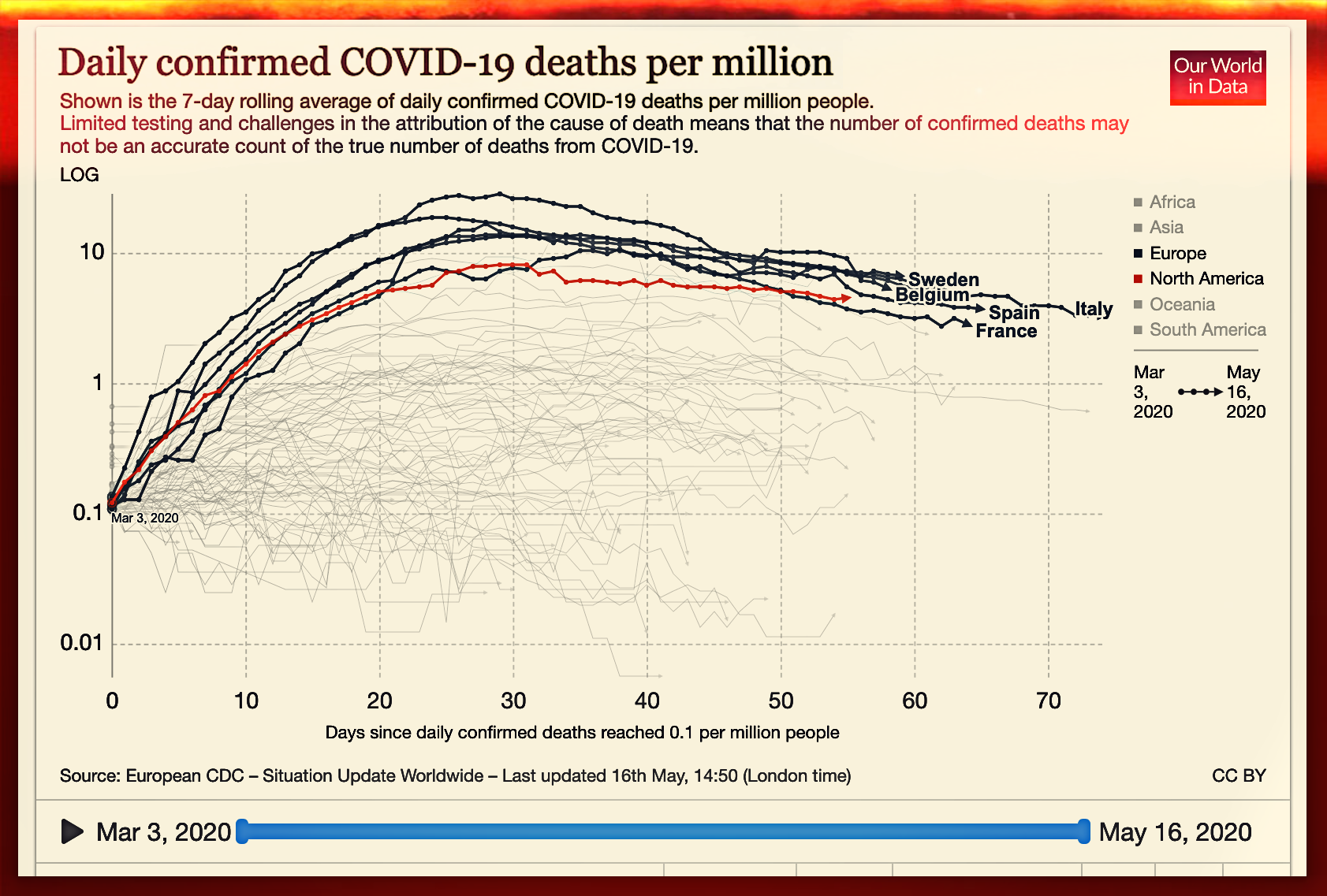
On 14 May, Sweden reached the top among the worst affected countries regarding the COVID-19 deaths per million. Those countries were Belgium, France, Italy, Netherlands, Sweden, and the United Kingdom /which is not shown in this graphic because of curves overlapping –See below). The graphic above is of 16 May 2020.
Graphic: Our world in Data
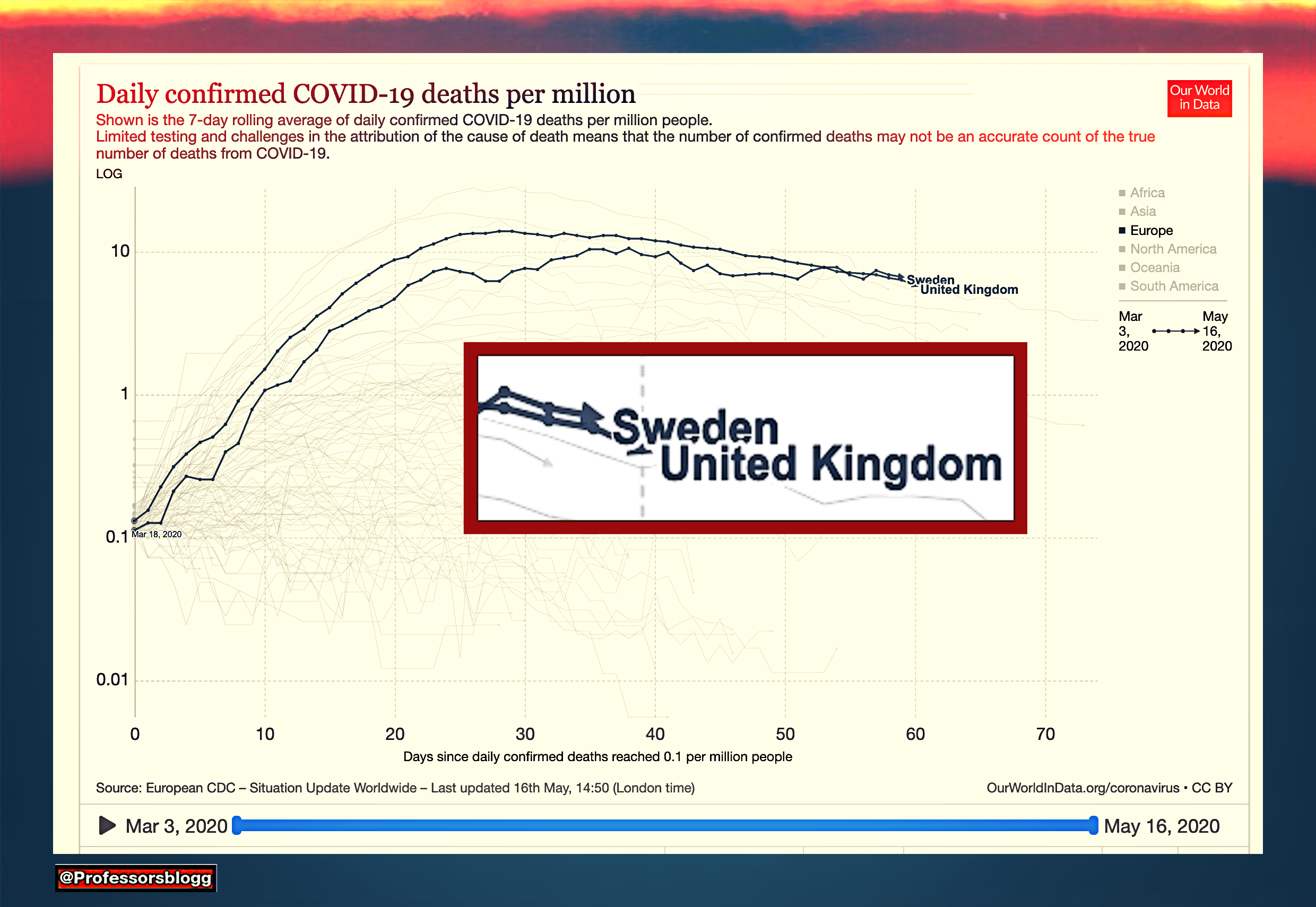
Difference between the U.K. and Sweden (on top)
Source of data in embedded box: Our world in Data
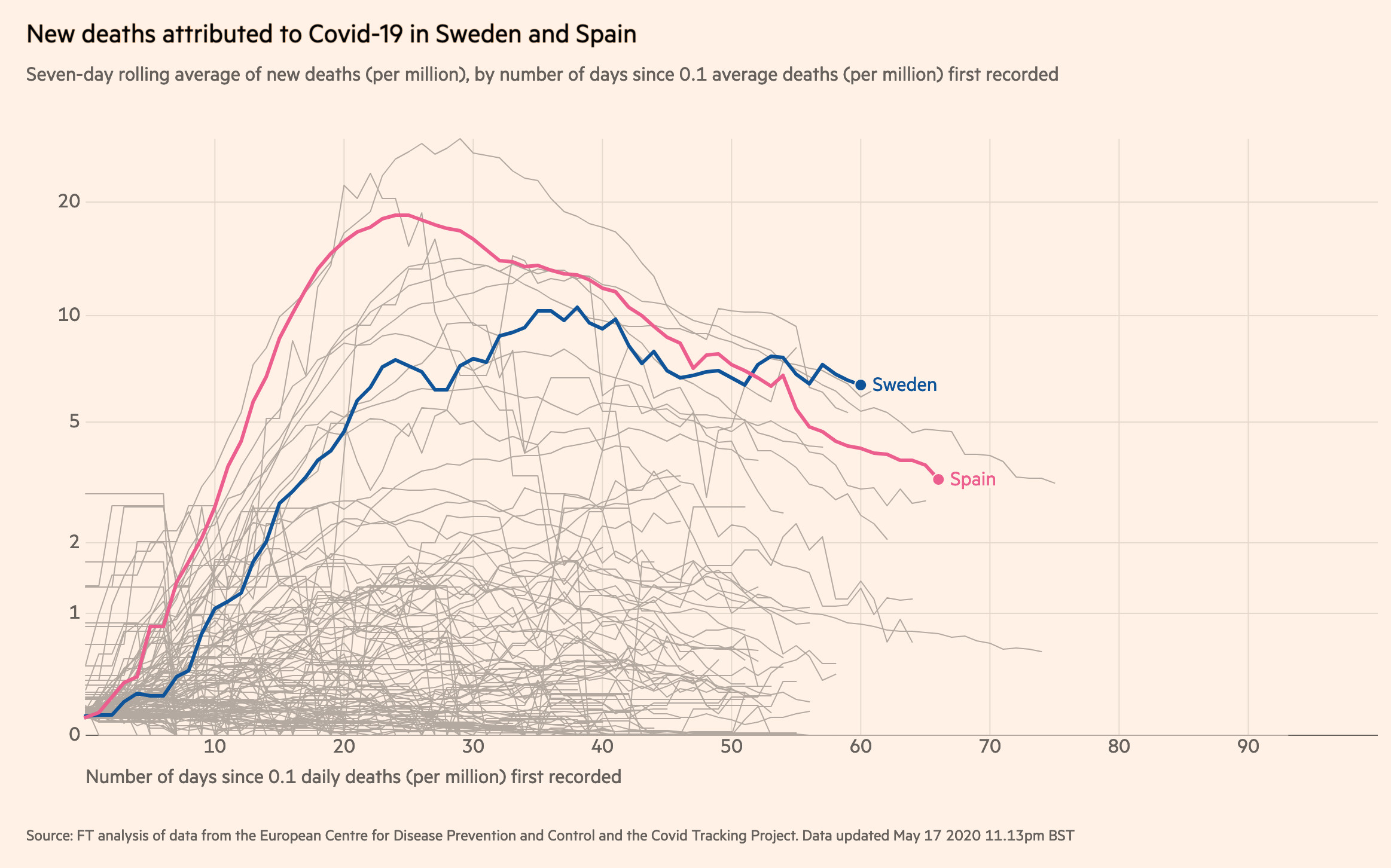
As of 17 May 2020, Sweden continued on top.
Source: Financial Times
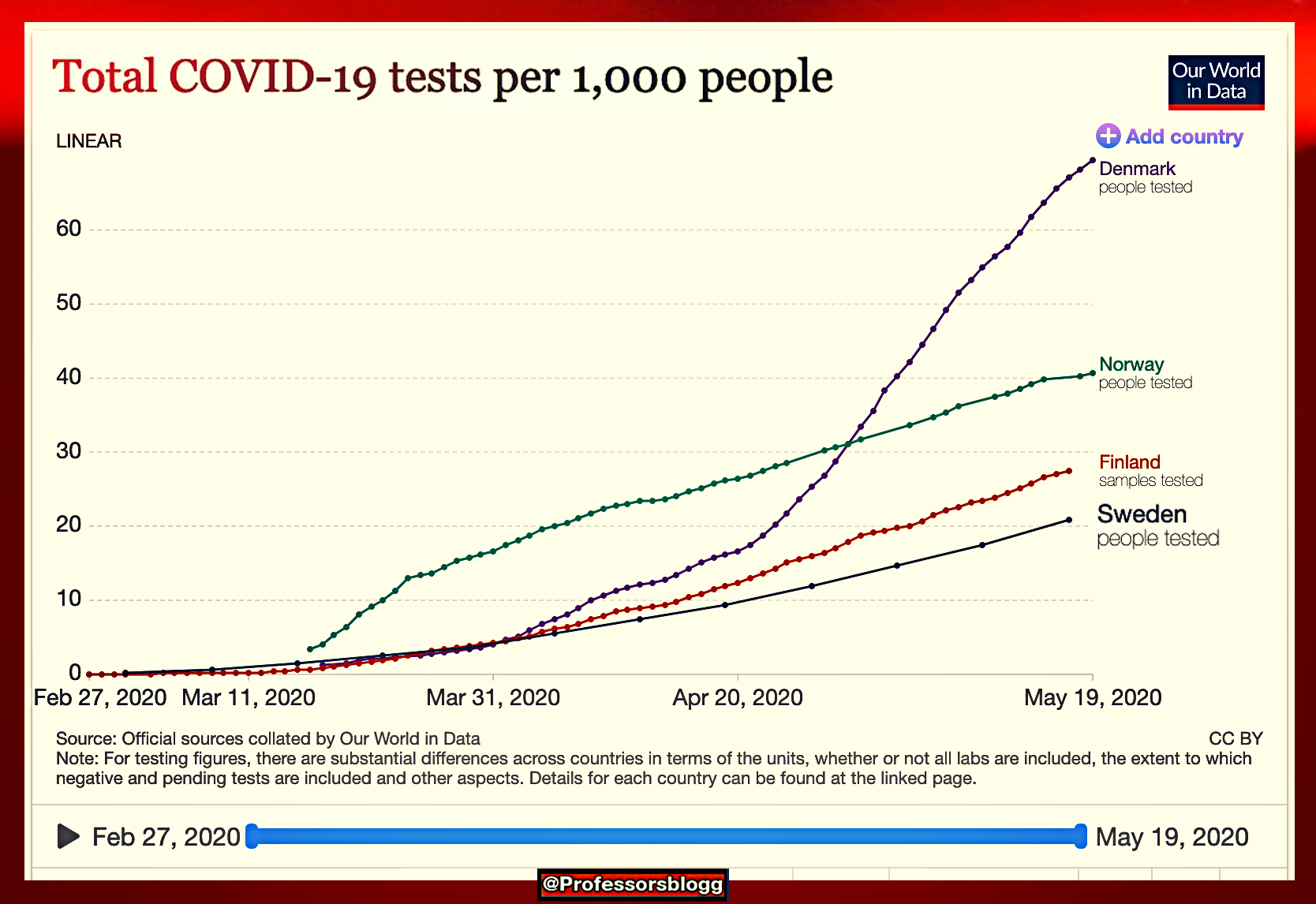
As of 19 May 2020, Sweden continued on the lowest position regarding implementation if the COVID-19 testing recommended by the WHO
Source of data: Our world in Data
